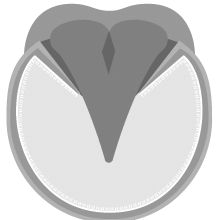
Barrier Protection and Hoof Balm for Daily Use
The Ultimate in Hoof Protection and Conditioning
Silverfeet

FAQ's.....
How do I maintain strong and healthy hooves?
-
Provide a well-balanced nutritional diet.
-
Pick out hooves twice daily.
-
Keep thoroughly clean (use water and stiff brush if necessary).
-
Avoid prolonged exposure to mud and damp conditions.
-
Regular visits from a qualified farrier (4 to 8 weeks average).
-
Using a hoof oil brush, apply SILVERFEET Hoof Balm twice daily to the cleaned hoof wall, sole and frog.
-
Ensure that the balm is worked into any cracks or splits, especially around the frog.
Can I hurt my horse when picking out his hooves?
-
A healthy frog cannot be damaged by a normal blunt ended hoof pick; it is very robust and designed to help support a considerable proportion of the horse's body weight. However some conditions such as thrush can be painful and cause your horse to flinch.
What is thrush?
-
Thrush is an unpleasant bacterial/fungal infection which produces a foul smelling grey/black discharge from the central (1) and lateral (2) sulci (clefts) of the frog (see diagram). Pain may be felt when pressure is applied to the affected areas. In the most severe cases an invasion of the Deep Digital Flexor Tendon can result in severe lameness.
What should I do if I suspect my horse's hooves have thrush?
-
Follow guidelines from question 'how do I maintain strong and healthy hooves'. Consult your farrier or vet if symptoms persist or worsen.
My horse's feet smell but there is no discharge, does he have thrush?
-
The smell may be the start of thrush or just a build-up of other bacteria commonly found in horse's feet. Moist, damp, dirty conditions make the perfect breeding ground for bacteria so try to avoid these conditions where possible. Follow the guidelines in 'how to maintain strong and healthy hooves' and if in any doubt consult a qualified farrier or vet.
What is white line disease?
-
White line disease (otherwise known as seedy-toe) is a bacterial/fungal infection of the stratum medium layer of horn. This is the non-pigmented layer between the white line and the outer hard hoof wall. The infection is usually secondary to other conditions that cause hoof wall separation (chronic laminitis, poor hoof conformation, cracks in hoof wall/white line) that may allow bacteria and fungi to enter. White line disease will not normally be the primary cause of lameness. If left untreated however, the damage may be sufficient to cause a mechanical tearing between the lamina and the outer hoof wall causing movement of the distal phalanx (pedal bone).
How do I treat white line disease?
-
Correct the cause of the hoof wall separation if possible. Your farrier will then remove the affected section of hoof wall. Follow guidelines on 'how do I maintain strong and healthy hooves'.

1
2
2